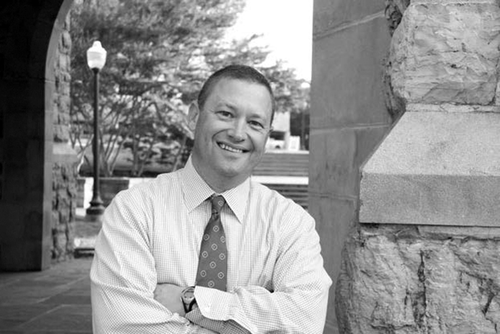Off the Mark
Dear Faithful Colleagues,
Although I don't have any, I love reading the bumper stickers people put on their cars. Fair warning, bumper sticker community—you're a traffic hazard! I've come dangerously short of several traffic accidents trying to get close enough to read your cars. I advise larger font for all you folks trying to make a statement.
I recently encountered one of these stickers that I can't stop rolling around in my head. It said “You don't have to believe everything you think.” Given the absurd things that go through my mind, this was great news. It also got me thinking about why people believe things that really aren't true. If you're like me, you carry along a boatload of myths handed down to you from who knows where: don't swim for an hour after eating; don't swallow gum or else it will stay in your stomach for seven years; cold weather makes you sick. At the end of the day, embracing these sorts of myths does no harm, except you believe something that isn't true. But in education, systems of erroneous belief may change the course of a person's life, not to mention the trajectories of families and societies.
I recently came across the work of Todd Rose, who leads the Mind, Brain, and Education program at the Harvard Graduate School of Education. Like me, Mr. Rose was one of those “below-average” high school students. The standardized measuring stick deemed us less talented than the mean. That bumper sticker, YOU ARE BELOW AVERAGE, was plastered on everything—most notably on many of our teachers' expectations and attitudes. We learned first hand that educators very much shape the narratives we accept as true—even when the conclusions are incorrect.
Today, Mr. Rose is a scholar of an emerging interdisciplinary field called the science of the individual. According to Rose, “The field rejects the average as a primary tool for understanding individuals, arguing instead that we can only understand individuals by focusing on individuality in its own right” (p. 12). If you read his new book, The End of Average: How We Succeed in a World that Values Sameness, you'll be reminded over and over again how addicted higher education is to the law of averages. In fact, I was overcome with a daunting realization that our entire educational system (grades, admissions applications, course evaluations) is built around a standardization that perpetuates and undergirds one faulty assumption after another.
Although we've been taught to think that some students are below average, average, or above average, we don't have to believe it. Imagine, for example, that educators believed talent is present in every single human. Now imagine that based on that conviction, educators invited every student into opportunities to discover and develop their particular excellence. If we really believe every human being has talent and potential that can't be relegated to simple measurement, we may need to reconsider how we think about what education looks like. Let's reformat learning environments to be laboratories of self-discovery where students have the gift of finding their brilliance.





